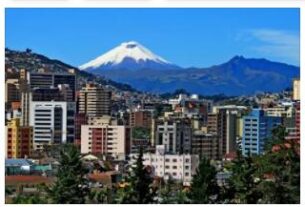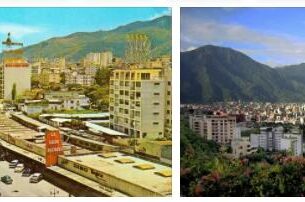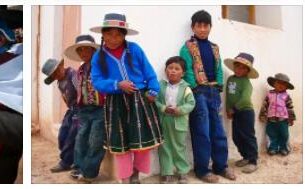Population
South American state. At the 2000 census the population was 169,799,170 residents, Increased to 186,405,000 according to a 2005 estimate.
According to clothingexpress, a country of continental dimensions (it covers 6 % of the total emerged lands and 41.5 % of Latin America), Brazil presents landscapes marked by large morphological blocks, all of which tend to be horizontal, where relationships take place over great distances. The result is a highly unequal distribution of the population: never as in the Brazilian case do the density values have a relative meaning. Compared to only 21 residents per km 2 of the general average, in fact, the relationship between demographic load and disposable income configures widespread and persistent situations of overpopulation: this happens in particular in the Northeast (32 residents per km 2), which, moreover, while at the end of the 18th century it was one of the centers of gravity of the Brazilian population (47 %), in the early 2000s its relative weight was very low (28 %). Since the Southeast has always maintained, over the same period of time, between 41 and 45 % of the total population, the greatest relative growth has therefore occurred in the North (from 3 to 7 %), in the Center-West (from 2 at 7 %) and in the Sul (from 7 to 15%): in the first two of these regions the advancement of pioneering fringes is still underway, for the exploitation of new primary resources, which has raised so many conflicts regarding environmental protection and the risk of impoverishment of the fundamental forest heritage. Besides the distributional data, however, we must recall the absolute growth of the population, more than tenfold compared to 1900 (when it was only 17 million). The pace of this growth is, however, declining, and Brazil now appears to have entered what can be defined as a phase of demographic transition. While, in fact, the gap between the birth and death rates reached its maximum between the fifties and sixties of the 20th century. (44 ‰ e13.5 ‰ respectively), producing an explosive natural increase, the most recent data (19 ‰ and 7 ‰ in 2003) see this increase drop to values slightly higher than 1-1.5 % per year, and therefore on a single figure indicative of human development in the process of consolidation, as also shown by the data on average life expectancy at birth (66 years for the male component and 74 for the female component, which constitutes 51.5 % of the urban population), and despite a infant mortality still relatively high (30‰). Consequently, the age pyramids show, starting from the 1970s, the progressive shrinking of the infantile classes and, especially in urban areas, the enlargement of the intermediate classes, both typical phenomena of a more mature demographic trend. However, the demographic projections foresee the exceeding of 200 million residents by 2020.
One of the great problems of Brazil is represented by the phenomenon of urbanism, characterized by enormous agglomerations and precarious suburbs, which have become emblematic of a socio-spatial segregation that is still very clear in terms of distribution of wealth (10 % of families own 45 % of income, while, at the other extreme, 40 % adds up to just 11 %). The urbanization process was further complicated by the evolution of the internal administrative geography, corresponding to the rapid process of occupation and use of the territory even in the peripheral regions: the number of municipalities rose from less than 1600 in 1940 to over 5500in 2003. Therefore, a new urban planning regulation has become indispensable, finally adopted in 2001: it makes planning mandatory for all cities with populations over 20,000 residents, introducing the principles of equalization of ownership, of the collective interest of services, of environmental balance and quality of life, and by promoting greater participation of citizens. To support these guidelines, a special ministry for urban policies was set up in 2003.
Economic conditions
Among the top ten countries in the world by overall volume of GDP, Brazil is now considered one of the great industrial powers. Its geopolitical position (not only in the American continent) and its close geographical proximity to Argentina exposed it in the early 2000s to the repercussions of the crisis that hit the latter country: structural weaknesses were thus highlighted already present in Brazil and accentuated by the economic policy of the previous decade. The Brazil arrived at the political change of 2003in a condition of precarious equilibrium, in the face of which the new government was forced to adopt a line of rigor in contrast with the expectations of the political and social forces that had supported its advent. On the other hand, the recovery of some fundamentals (including the primary budget surplus, even higher than what is required by the international financial organizations) boosted investor confidence; by the end of 2003 the debt fell from 63 % to 57 % of GDP, and its longer-term reshaping gave the economy respite, even if it could not cancel the risks for the future. As a result of these economic events, the pace of GDP growth – after an absolute decline that occurred in mid- 2001, coinciding with the explosion of the Argentine crisis – however, it slowed down compared to the average maintained in the previous decade. GDP per capita also declined, returning to below $ 3,000 (from a peak of nearly $ 3,700 in 1994) and mirroring wage loss and rising unemployment, coupled with truly chronic underemployment. In 2004, per capita GDP rose to over $ 3,300, while the unemployment rate fell, albeit slightly.
The Southeast and the Sul, with their different characteristics, remain the economic fulcrum of the country. The first, in fact, sees a more advanced agriculture, integrated in the agro-industrial transformation chain centered on Santos, with tropical (coffee, cocoa, sugar cane) and subtropical (soybean, citrus) products that continue to occupy positions of absolute importance in world rankings and in exports. The latter are partly penalized by the fluctuations in prices on international markets, which Brazilian producers attribute to the commercial policies and subsidies to the primary sector practiced by both the United States and the European Union. But, above all, the Sudeste encompasses 80% of the industrial potential of Brazil, located in the ‘triangle’ of San Paolo-Rio de Janeiro-Belo Horizonte; in particular, 45 % of companies with over 100 employees are based in the State of Sao Paulo (26 % in the metropolitan area alone). Furthermore, in the State of Minas Gerais there is still a fundamental share of the extraction of iron and bauxite, two minerals that place Brazil, respectively, in first and third place in the world rankings; in addition, off-shore oil fields have been activated in the State of Rio de Janeiro which, by doubling the total Brazilian production (75 million tons per year, since 2002), have alleviated one of the country’s few deficiencies in the mining field.
Despite its considerably smaller territorial and demographic dimensions, the Sul in turn tends to assume a strategic position: the only true cross-border region of Brazil and, as such, a meeting point between Lusitanian and Pampean cultures, it has greatly benefited from the European immigration currents of the 19th century, resulting in a more open social structure and a standard of living above the country’s average. Here relations with Argentina, Paraguay and Uruguay are knotted, which are of continually increasing importance in the context of MERCOSUR (Mercado Común del Sur), and a starting point for greater integration with other free trade areas.
The Brazilian industry is establishing itself in advanced sectors such as aeronautics, which has been privatized and has jumped to first place in exports thanks to a competitive capacity recognized worldwide. The automotive sector is keeping pace with the opening of new assembly lines. Above all, however, the increasing capacity to transform raw materials is relevant, which allowed Brazil to get out of that condition of unequal exchange that sanctioned its dependence on industrialized countries: steel production has in fact exceeded 30 million tons per year. (one third more than in 1990), while the oil refining capacity is able to fully saturate production.
The communications system appears to be oriented towards the road (65 % of internal traffic, against 20 % of the railway and 12% of coastal and river navigation; the rest goes to the pipelines and the aircraft): a choice that may appear in contrast with the great geographical distances and, above all, with a policy of containing energy consumption, pollution and environmental impact (overt, to this’ last point, the heavy effects of the construction of the trans-Amazonian road). However, thanks to the road system, the Brazilian territory is covered by a network (with large meshes, obviously, in the less inhabited areas) which, just forty years ago, could only be partially recognized in the Southeast, and which represented one of the key factors of economic development.



